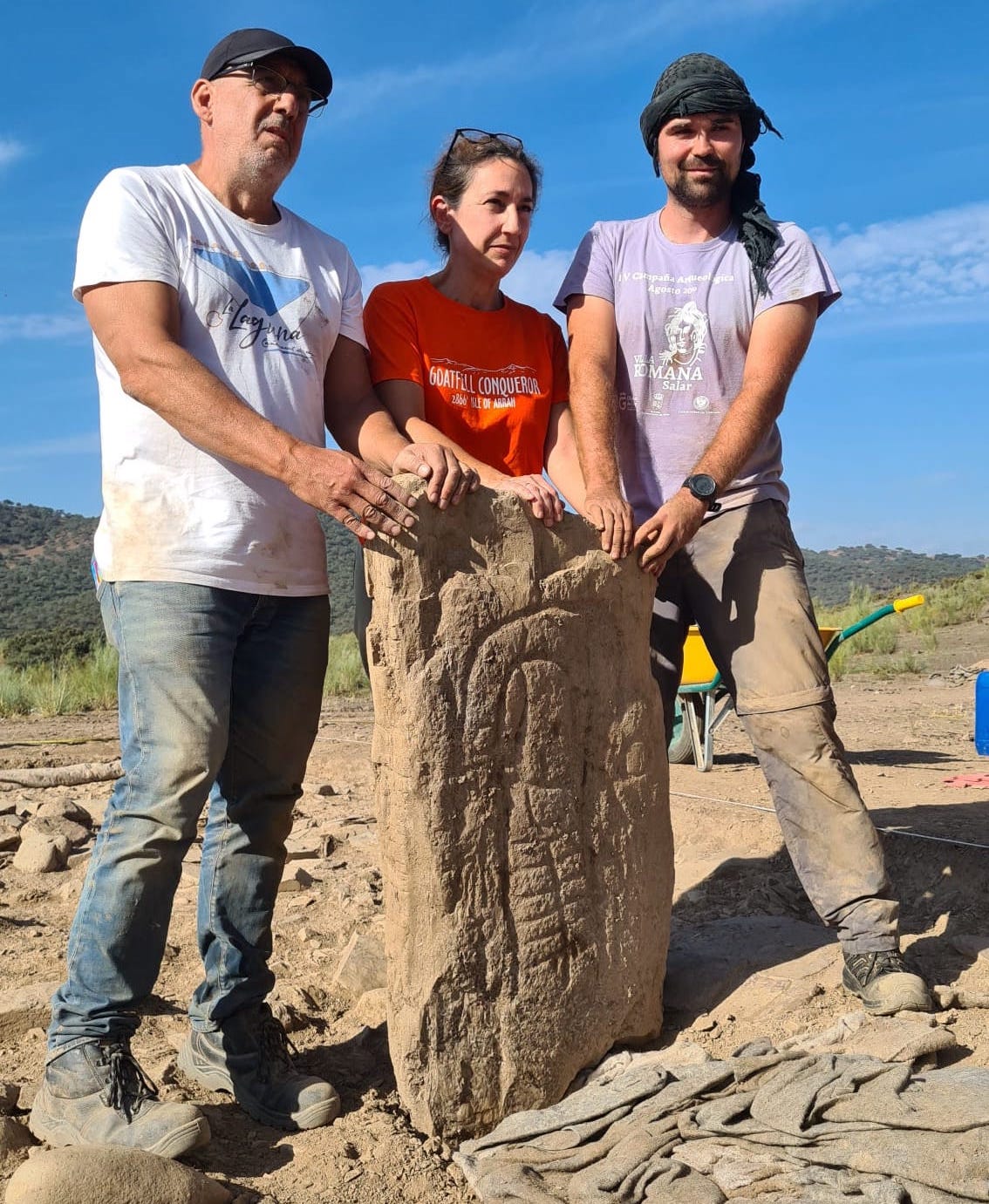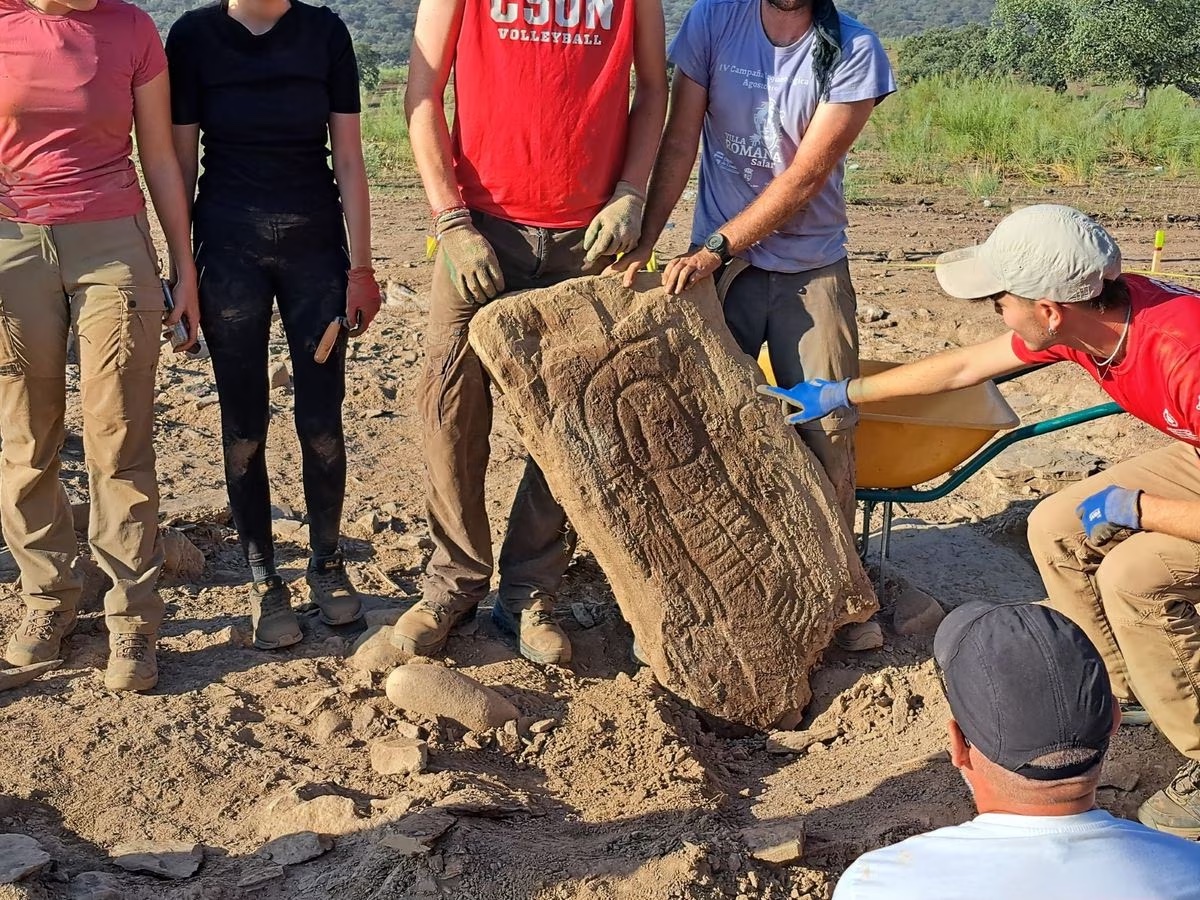In a surprising archaeological discovery, a well-preserved 4,000-year-old engraving of a giant phallus has been unearthed at an ancient burial site. This phallic artwork is the third stone slab to be found within the funerary complex, which dates back to the Copper, Bronze, and Iron Ages.
Archaeologists initially came across this “large necropolis with tumular funerary monuments, stone cists, and cremation pits” in June 2022. A “cist” in this context refers to a prehistoric European coffin that may contain a body or ashes.
The first stela, or standing stone slab, was discovered during road construction work in the area in April 2018.

This remarkable find was made at the Las Capellanías archaeological site, located in Cañaveral de León in southwestern Spain.
The research team involved in the excavation noted that the “phallic slab” challenges previous interpretations of the gender of depicted characters on such stelas. Traditionally, stelas with motifs around the head were interpreted as feminine. However, the recently discovered stela, despite wearing a diadem (a crown symbolizing royalty), clearly features male genitalia.
The excavation was conducted by experts from the universities of Seville, Durham, and Southampton. Professor Leonardo García Sanjuán, specializing in Prehistory and Archaeology at the University of Seville, co-directed the dig.
Professor García emphasized that these newly discovered stelas “graphically express the fluidity and subtlety of gender concepts in the narratives, stories, and histories they were associated with, probably related to mythical ancestors, legendary heroes, and heroines.”

The research findings now confirm that these stone slabs were erected to honor prominent individuals and served as markers and funerary monuments.
Professor García further explained, “This sensational discovery not only corroborates, again and unequivocally, the association of these steles with funerary sites, but it also provides more evidence that could turn many previously proposed hypotheses about this particular type of diadem-bearing piece on their heads.” It was previously assumed that these stelas represented only female characters, but the latest discovery features a male figure, complete with visible genitals and surrounded by an array of weapons.
This newfound information sheds light on the history and significance of these ancient stone slabs, resolving long-standing debates surrounding their location, function, and social importance.






